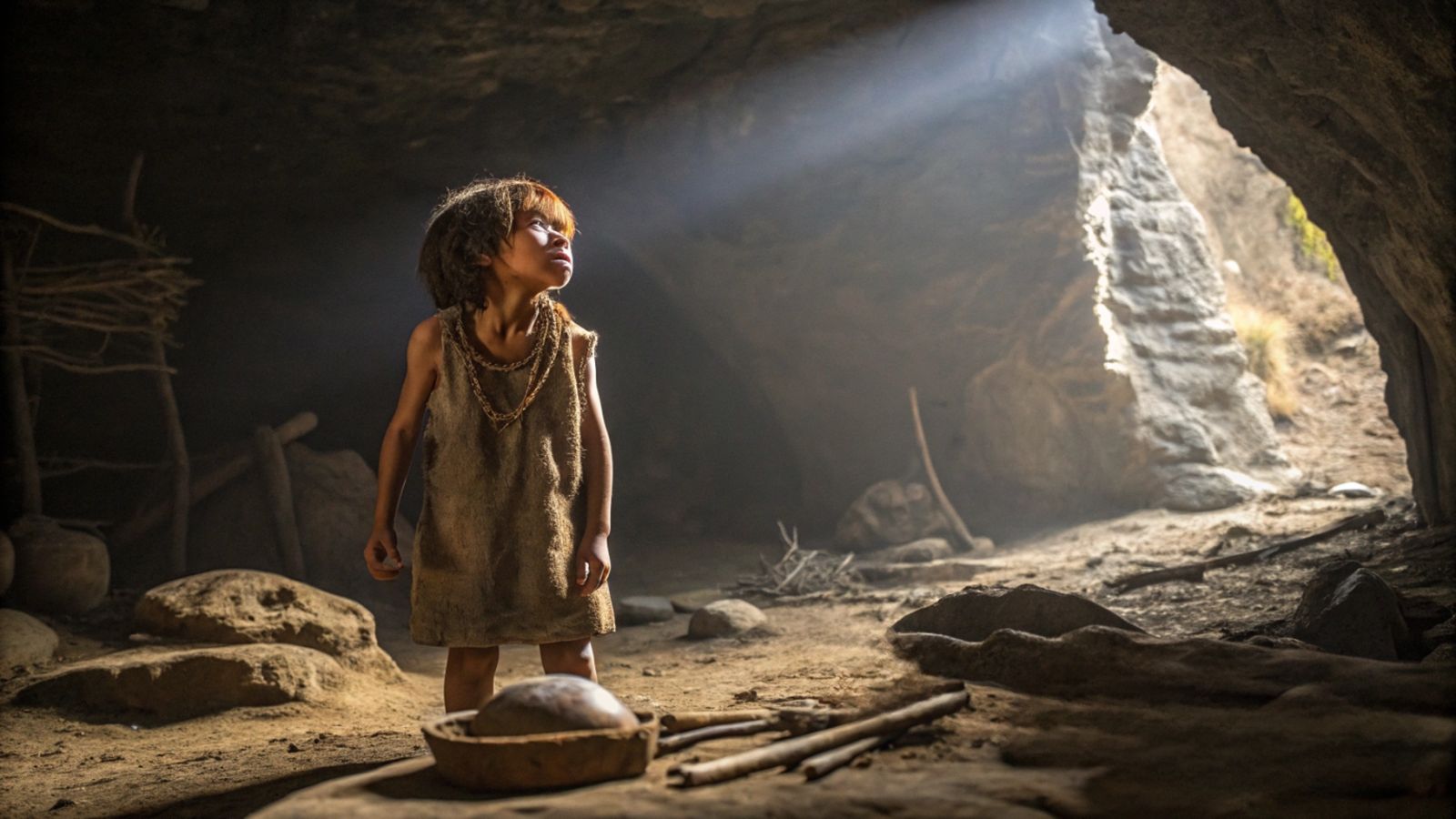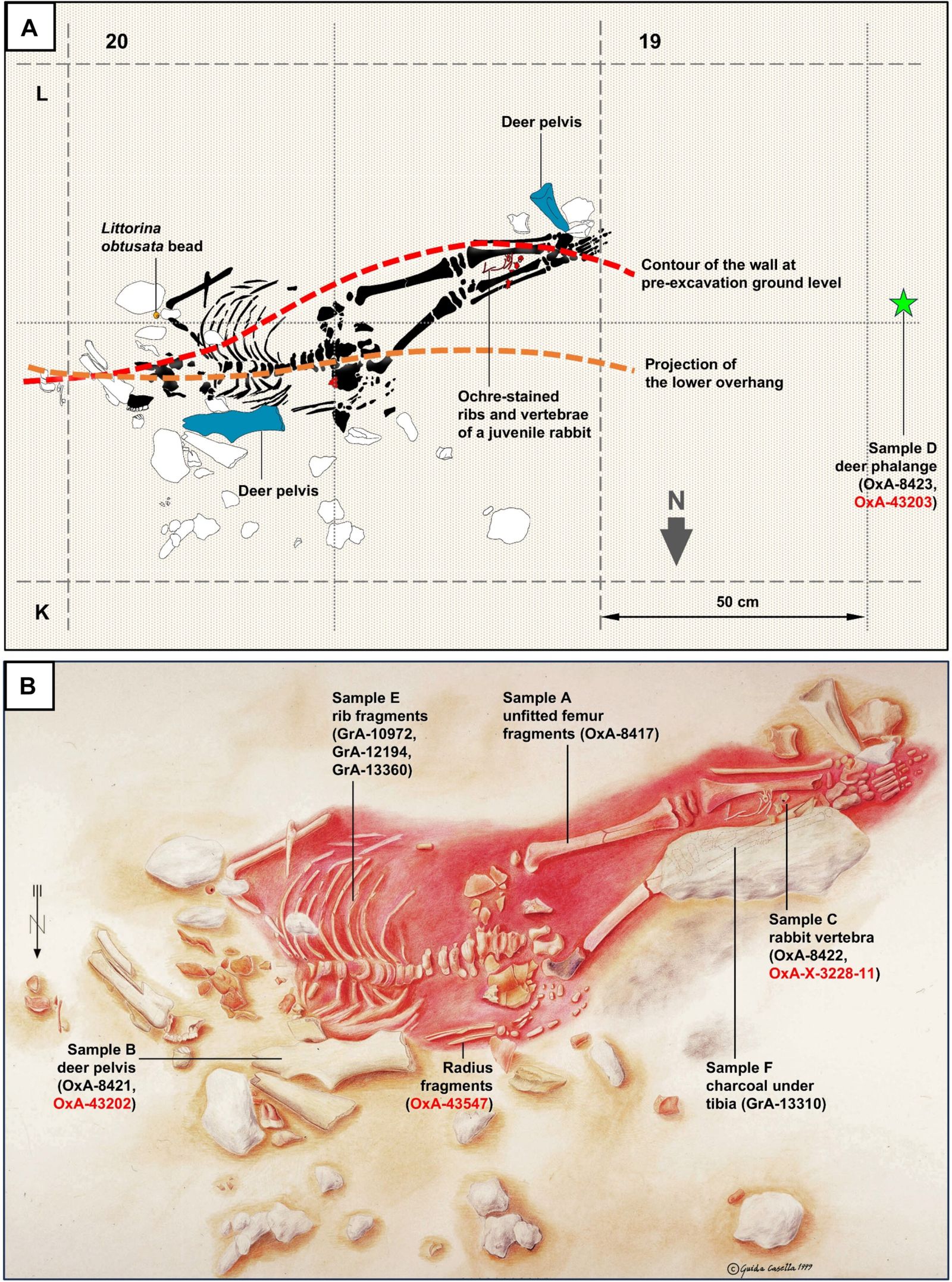Researchers succeed in dating this Human-Neanderthal hybrid skeleton 🦴
Published by Cédric,
Article author: Cédric DEPOND
Source: Science Advances
Other Languages: FR, DE, ES, PT
Article author: Cédric DEPOND
Source: Science Advances
Other Languages: FR, DE, ES, PT
Follow us on Google News (click on ☆)

The Lapedo child, whose remains were found in a rock shelter in Portugal, exhibits a unique combination of physical traits. Its prominent chin resembles modern humans, while its short and stocky legs are reminiscent of Neanderthals. This morphological mosaic has made it a key subject of study for understanding the interactions between these two species. However, precisely dating its remains proved to be a significant challenge due to bone contamination and the technological limitations of the time.
Innovative dating for an ancient mystery
Initial attempts at radiocarbon dating, conducted several decades ago, yielded imprecise results, ranging between 20,000 and 26,000 years. These uncertainties were due to contamination of the samples by roots and other organic materials. To overcome these obstacles, researchers used an innovative technique called compound-specific radiocarbon dating (CSRA). This method targets a rare amino acid, hydroxyproline, found almost exclusively in bone collagen, ensuring reliable results.
Using this approach, the team determined that the Lapedo child lived between 25,830 and 26,600 BCE, approximately 28,000 years ago. This precise dating confirms that the child belonged to the Gravettian culture, a period marked by the coexistence of modern humans and Neanderthals in Europe. The researchers also discovered that some elements of the burial, such as charcoal and deer bones, were older than the child, suggesting funerary practices.
This technological breakthrough opens new perspectives for archaeology. By reducing contamination risks, the CSRA method allows for precise dating of poorly preserved samples, such as those of the Lapedo child. It could be applied to other prehistoric sites, offering a clearer picture of the movements and interactions of ancient populations. Thus, this discovery not only solves a decades-old mystery but also paves the way for future research into our evolutionary past.
Insights into species interactions
The discovery of the Lapedo child has played a key role in understanding the interbreeding between modern humans and Neanderthals. At the time of its discovery, the idea of such interbreeding was controversial, as genetic evidence was lacking. Today, DNA analyses have confirmed that these interactions did occur, leaving a trace in the genome of modern populations, which contain between 1% and 3% Neanderthal DNA. The Lapedo child thus embodies a pivotal moment in human evolutionary history.

A) Plan showing the position of the dated samples, with laboratory numbers in red corresponding to their HYP redating.
B) Drawing based on the cited source.
Credits: (A) J.Z., (B) G. Casella.
The child's morphological characteristics, such as its short legs and prominent chin, illustrate successful hybridization between the two species. These traits suggest that the descendants of these unions were viable and well-adapted to their environment. This discovery reinforces the idea that Neanderthals did not simply disappear but contributed to the genetic heritage of modern humans, particularly in Europe.
Finally, this study highlights the importance of innovative scientific methods for revisiting ancient discoveries. Thanks to techniques like compound-specific radiocarbon dating, researchers can now explore questions that remained unanswered for decades. The Lapedo child is not only a testament to the past but also a reminder that our evolutionary history is far more interconnected than previously imagined.
To go further: What is compound-specific radiocarbon dating?
Compound-specific radiocarbon dating (CSRA) is an advanced technique that allows for precise dating of archaeological samples. Unlike traditional methods, which analyze bulk collagen, CSRA targets specific amino acids, such as hydroxyproline, found almost exclusively in bones. This approach reduces contamination risks and provides more reliable results, even for poorly preserved samples.
This method relies on the extraction and purification of specific organic compounds, such as amino acids from bone collagen. By isolating these molecules, researchers can measure their carbon-14 content, a radioactive isotope whose decay allows for determining the age of samples. Hydroxyproline, for example, is an ideal marker because it is rare in nature outside of collagen, ensuring that measurements are not skewed by external contaminants.
CSRA has already been successfully used on other prehistoric sites, such as the Vindija Cave in Croatia, where it helped clarify the age of Neanderthal remains. This technique opens new perspectives for archaeology by enabling precise dating of samples and improving our understanding of prehistoric chronologies. It thus represents an essential tool for exploring interactions between human species and reconstructing our evolutionary history.